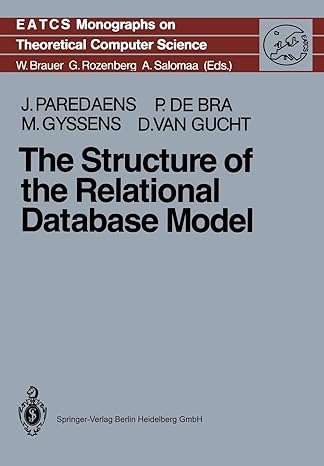Question
This assignment is an exercise to increase your familiarity with python and three different kinds of mutations: silent, where the codon changes to another codon
This assignment is an exercise to increase your familiarity with python and three different kinds of mutations:
silent, where the codon changes to another codon for the same amino acid
nonsense, where the codon for an amino acid changes to a stop codon (TAG, TGA or TAA), and
missence, where the codon changes to a codon for a different amino acid.
Your job is to write a Python program which makes a table of all of the codons for which a single nucleotide change can result in any one of the above kinds of mutation. The table should look something like: ---------------------------------------------------------------
Codon (aa) Silent Nonsense Missence (aa) GGA (G) GGG (G) TGA (X) AGA (R) ... -------------------------------------------------------------- The number of codons with this property is ___ --------------------------------------------------------------- Not all codons have this property, so your program should only put in the table the ones that do. You will need to make a python dictionary with a statement like:
codons = {'GGG' : 'G', 'GGA' : 'G', 'GGC' : 'G', 'GGT' : 'G'} except that you will have to include all 64 codons. These pairs represent key-value pairs, where the key is the codon triplet, like 'GGG', and the value is the corresponding amino acid, like 'G', for glycine. You can find the codon table in the text for this course and in many places on line. It won't matter if you use 'GGT' for the codon in DNA or 'GGU' for the codon as it appears in RNA. When you have the dictionary written, then you can access it somewhat like you would an array, where codons['GGG'] has the value 'G'. Thus, the index of the variable codons is a codon and the result is an amino acid, given by a single letter code.
You can check that the dictionary is working by running the following loop:
for codon in codons : print codon, codons[codon]
You can see all of the keys by print codons.keys()
Design and implement an algorithm in Python to produce the desired table, including a count of the number of rows, as shown above.
Submit your program and the output.
Step by Step Solution
There are 3 Steps involved in it
Step: 1

Get Instant Access to Expert-Tailored Solutions
See step-by-step solutions with expert insights and AI powered tools for academic success
Step: 2

Step: 3

Ace Your Homework with AI
Get the answers you need in no time with our AI-driven, step-by-step assistance
Get Started


